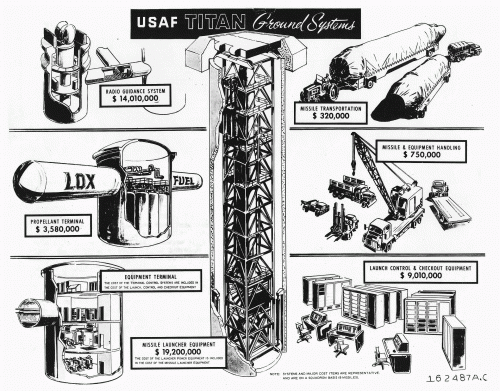As a spin off of the "SPRINT ABM" thread HERE in order to prevent any more derailing (I have some photographs somewhere of proposed SPRINT IIs I'll post later this morning).
Here's some talk on the politics of systems development.
The B-1 in it's previous incarnations as AMSA -- Advanced Manned Strategic Aircraft -- was continually delayed by Robert McNamara -- if you go and read his briefings to the president on the DoD budget from when he was SecDef -- you see him constantly turning down requests by the USAF to enter the development-validation phase; and instead to continue with endless paper reports.
It wasn't for nothing that AMSA was said to stand for "America's Most Studied Aircraft" by wags.
It wasn't until McNamara was removed as SecDef that AMSA was allowed to go forward into the dem-val phase and move beyond very detailed sketches on paper.
I've managed to OCR the majority meat (except for the long detailed tables) of one of McNamara's recommendations:
Link to FY 1967-71 recommended forces
Basically, in that one, he turns down the USAF's request for 12 Squadrons of F-12B (216 aircraft), the introduction of SRAM for the B-52G/H, a request to start serious development work on AMSA to support a 1970s IOC, etc.
For the Army, he turned down their request to deploy Nike-X.
In another memorandum he wrote to Johnson on 22 September 1962; titled "Recommended FY68-72 Strategic Offensive and Defensive Forces", McNamara wrote:
It's worth noting that the production contract for the first F-12Bs was $360 million for 93 production airframes at about $3.87 million each F-12B.
This is less Government Furnished Equipment that would have pushed up the cost to around $11.6 million.
These 93 F-12Bs would have equipped two fighter groups at about 36 assigned aircraft, one at Duluth AFB, and the other at Bangor AFB.
Despite the aircraft being approved by congress and funding actually allocated for it; McNamara impounded the funds through a legal sleight of hands and refused to allocate the money. As a bonus, he also ordered the production tooling being set up for the F-12B to be destroyed.
The law that allowed him to impound the funds and ignore congress has been changed; it can't be done now; but the SecDef can order tooling held by the DoD to be scrapped -- right now, there are about 350,000 items of production tooling in long term storage at AMARC.
Until recently, this included a complete F-84 production line; because a lot of NATO countries and allies flew F-84s well into the eighties, and there was thought to be a requirement for spares that could only be made using the tooling from that line.
What gets saved?
While a lot of general purpose tooling is owned by the aircraft manufacturer and can be recycled for use on other aircraft programs or just scrapped; the specialized tooling dedicated to a single aircraft type to produce very large subsections such as wings, tails etc; is very hard to build or replace.
This tooling is stored by the USAF at AMARC.
A friend recently did some research into production tooling for a story of his and asked around whether the tooling for the B-1 and B-2 had been saved. The answer he got was that this tooling is stored automatically and is only scrapped if a specific order was issued, like when IIRC Cheney ordered the F-14 line broken up in the mid-90s.
Here's some talk on the politics of systems development.
The B-1 in it's previous incarnations as AMSA -- Advanced Manned Strategic Aircraft -- was continually delayed by Robert McNamara -- if you go and read his briefings to the president on the DoD budget from when he was SecDef -- you see him constantly turning down requests by the USAF to enter the development-validation phase; and instead to continue with endless paper reports.
It wasn't for nothing that AMSA was said to stand for "America's Most Studied Aircraft" by wags.
It wasn't until McNamara was removed as SecDef that AMSA was allowed to go forward into the dem-val phase and move beyond very detailed sketches on paper.
I've managed to OCR the majority meat (except for the long detailed tables) of one of McNamara's recommendations:
Link to FY 1967-71 recommended forces
Basically, in that one, he turns down the USAF's request for 12 Squadrons of F-12B (216 aircraft), the introduction of SRAM for the B-52G/H, a request to start serious development work on AMSA to support a 1970s IOC, etc.
For the Army, he turned down their request to deploy Nike-X.
In another memorandum he wrote to Johnson on 22 September 1962; titled "Recommended FY68-72 Strategic Offensive and Defensive Forces", McNamara wrote:
With strategic warning we estimate that 32 UE F-12s or 48 UE stretched F-111As could achieve the same number kills before weapons release as the current force which has a 10 year cost of $3.0 billion. The 10 year systems cost for the 32 UE F-12 force have increased from the previously estimated $1.9 billion to $2.9 billion. Estimates for the F-111 force remain at $1.5 billion. The F-111 force therefore appears substantially more efficient than the F-12s against the currently projected threat. Supplementary calculations indicate that it is comparable in efficiency to the F-12 force against possible future threats.
The 48 UE F-111 force would operate from 4 main bases, 8 dispersal bases and 30 recovery/recycle bases. Sixteen combat support aircraft, that would be flushed with the interceptors, would carry missiles, ground support equipment, spares, and personnel to support the F-111 turn-around at the recycle bases. With 42 AWACS aircraft to provide airborne control, we could reduce the present ground environment, retaining only enough radars and BUIC centers for peacetime control.
The investment costs for this force include $676 million for the F-111 and $790 million for AWACS. Since the modernized force would ultimately have operating costs about $250 million per year lower than the present posture, the additional investment costs would be recouped by FY78.
Given the advantage of the F-111 interceptors--an aircraft already in long term production--and in the absence of a decision to deploy Nike-X, the decision to modernize our air defense structure can be deferred for one year.
The F-12 development program will be reoriented in FY 67 and FY 68 to include further design studies for the F-111 interceptor, cost studies, and adaptation of the Navy AWG-9 fire control system for ADC use, using the YF-12 as a test bed. The AWACS development program which supports both tactical and CONUS defense missions, will be continued as a high priority effort.
It's worth noting that the production contract for the first F-12Bs was $360 million for 93 production airframes at about $3.87 million each F-12B.
This is less Government Furnished Equipment that would have pushed up the cost to around $11.6 million.
These 93 F-12Bs would have equipped two fighter groups at about 36 assigned aircraft, one at Duluth AFB, and the other at Bangor AFB.
Despite the aircraft being approved by congress and funding actually allocated for it; McNamara impounded the funds through a legal sleight of hands and refused to allocate the money. As a bonus, he also ordered the production tooling being set up for the F-12B to be destroyed.
The law that allowed him to impound the funds and ignore congress has been changed; it can't be done now; but the SecDef can order tooling held by the DoD to be scrapped -- right now, there are about 350,000 items of production tooling in long term storage at AMARC.
Until recently, this included a complete F-84 production line; because a lot of NATO countries and allies flew F-84s well into the eighties, and there was thought to be a requirement for spares that could only be made using the tooling from that line.
What gets saved?
While a lot of general purpose tooling is owned by the aircraft manufacturer and can be recycled for use on other aircraft programs or just scrapped; the specialized tooling dedicated to a single aircraft type to produce very large subsections such as wings, tails etc; is very hard to build or replace.
This tooling is stored by the USAF at AMARC.
A friend recently did some research into production tooling for a story of his and asked around whether the tooling for the B-1 and B-2 had been saved. The answer he got was that this tooling is stored automatically and is only scrapped if a specific order was issued, like when IIRC Cheney ordered the F-14 line broken up in the mid-90s.


